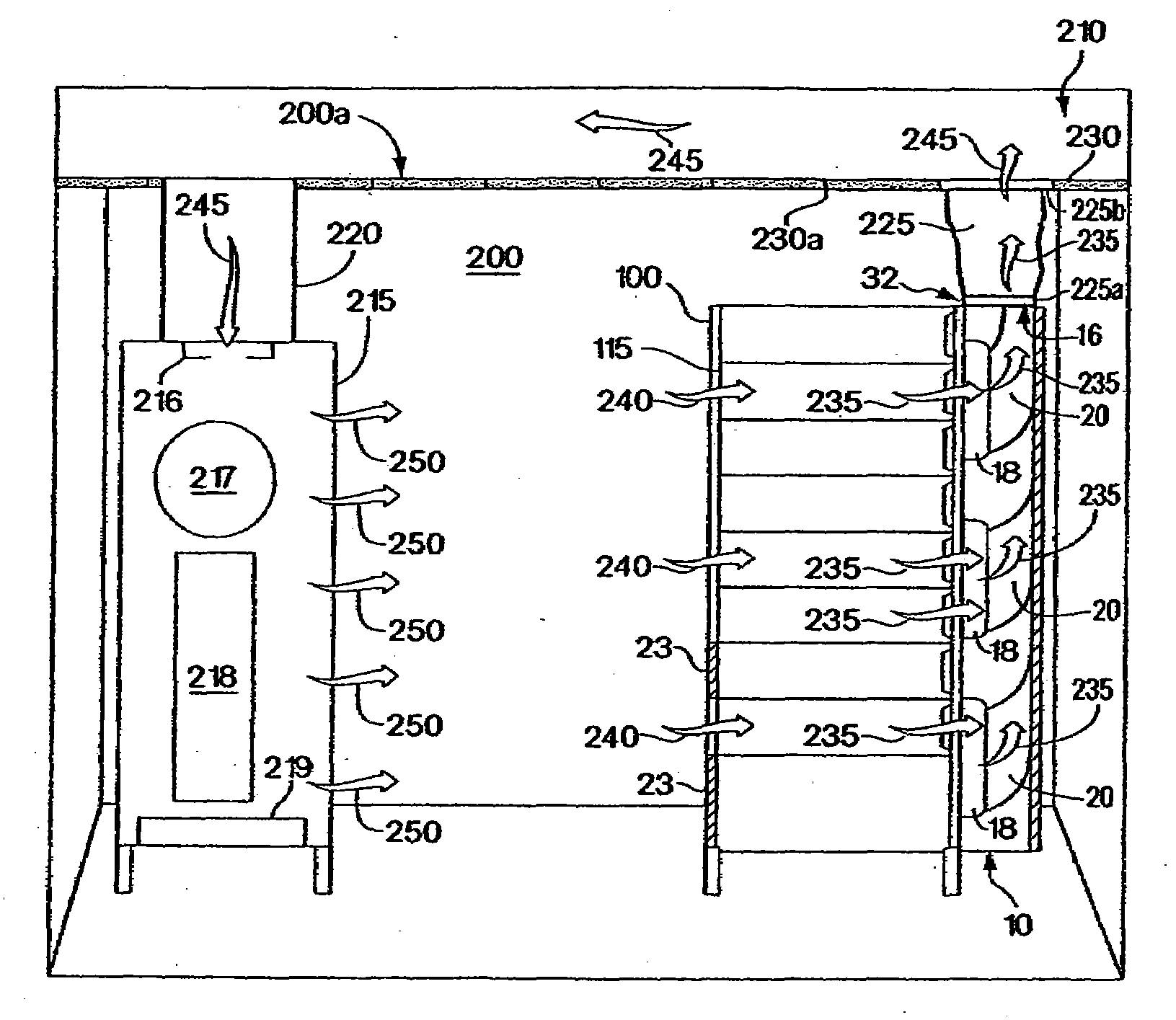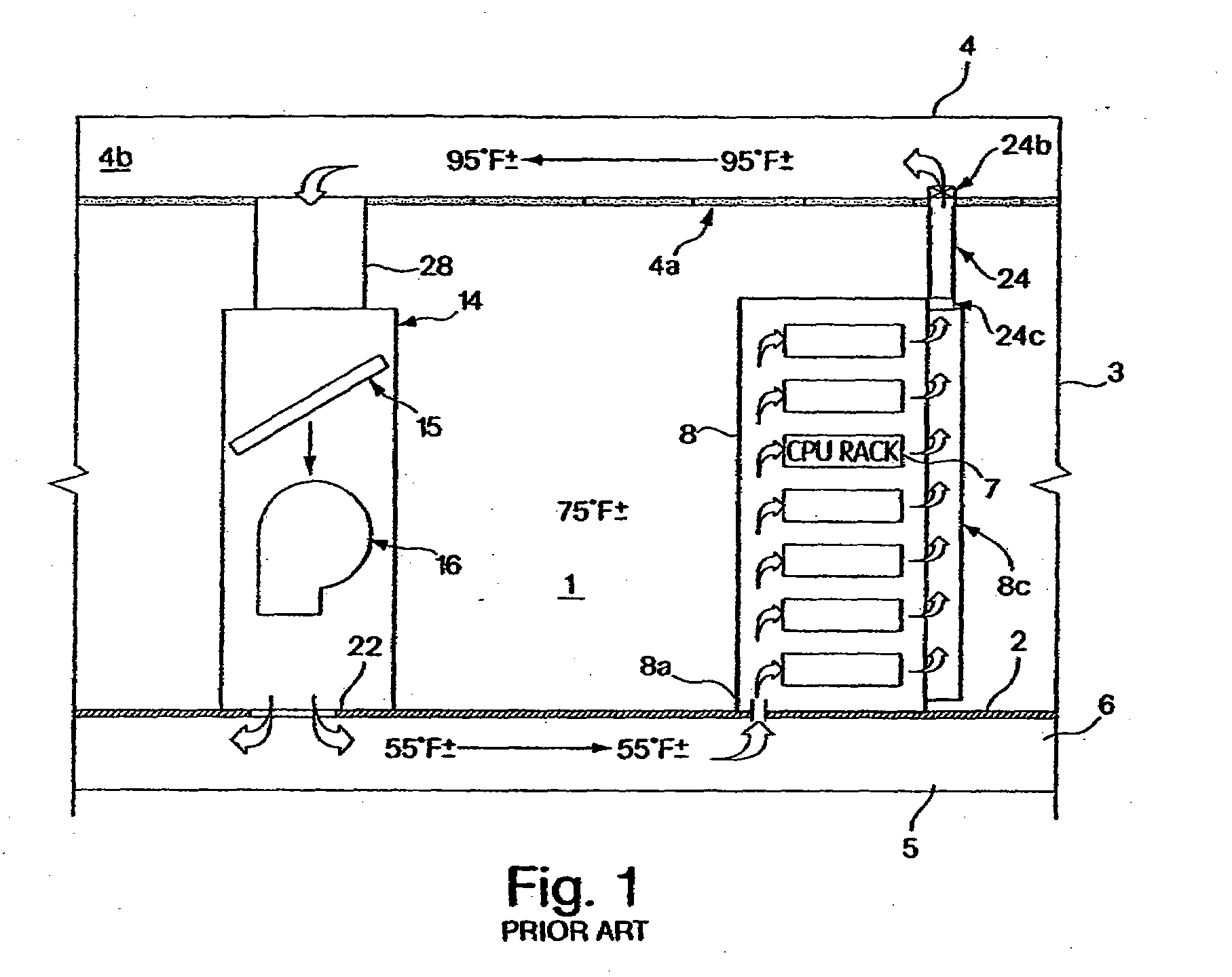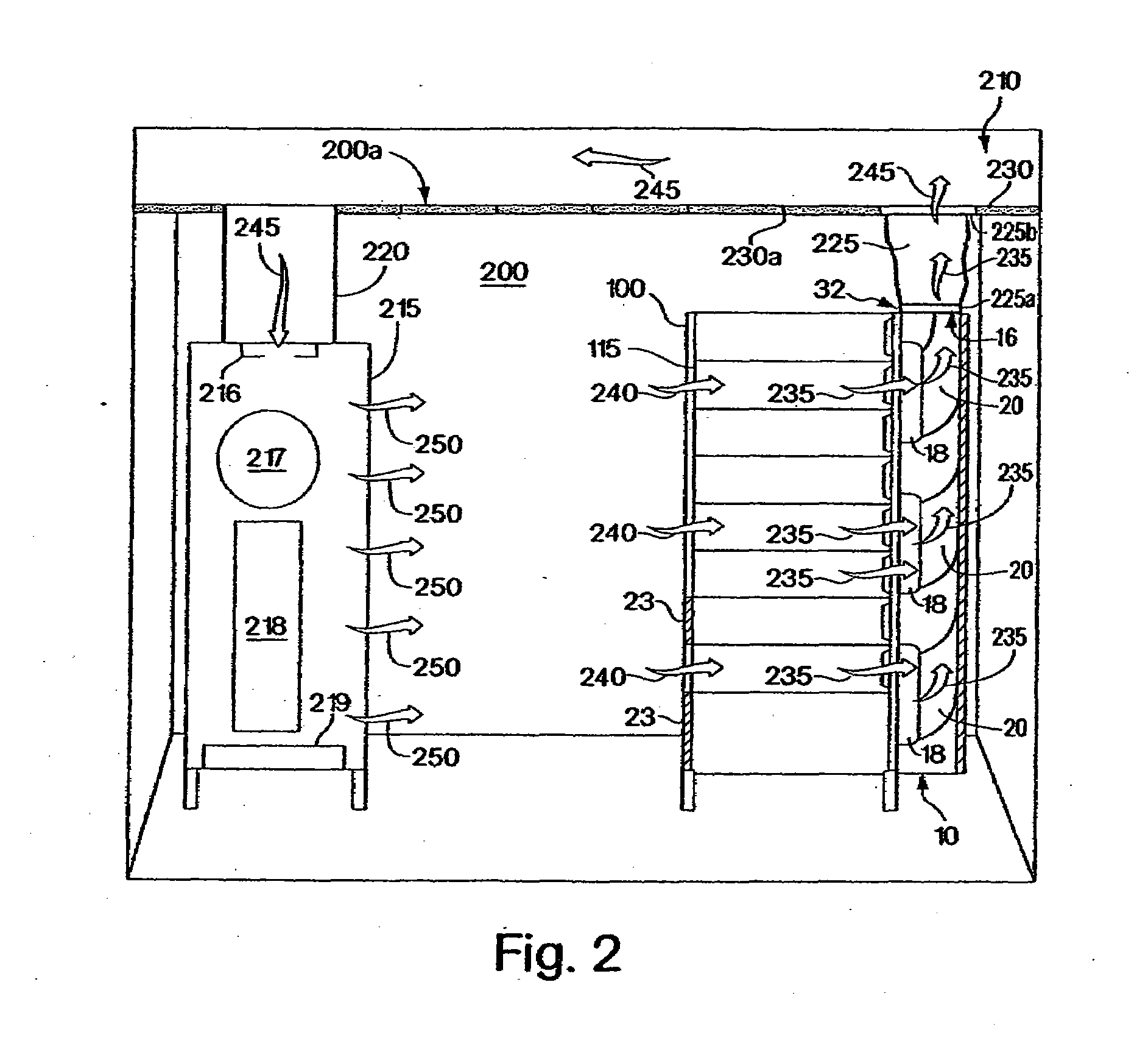Exhaust air removal system
a technology of exhaust air and removal system, which is applied in the direction of cooling/ventilation/heating modification, electrical apparatus casing/cabinet/drawer, domestic cooling apparatus, etc., can solve the problems of rack-mounted equipment that consumes electrical power and generates heat, rack-mounted equipment that is housed within an enclosure is particularly vulnerable to heat build-up and hot spots, and achieves the effect of minimizing/reducing the extent to which exhaust air mixes
- Summary
- Abstract
- Description
- Claims
- Application Information
AI Technical Summary
Benefits of technology
Problems solved by technology
Method used
Image
Examples
Embodiment Construction
[0051]Illustrative embodiments of the invention provide an exhaust air removal system and method for use with equipment rooms and data centers in which communications and information technology equipment is stored and operated. More particularly, an exhaust air removal system and method are provided to remove undesirable thermal exhaust air produced by equipment, such as rack-mounted servers, CPUs and other electronic equipment, during operation of the equipment. The exhaust air removal system is constructed and arranged to connect to an equipment rack and / or a rack enclosure. When connected to an equipment rack and / or enclosure, the system is disposed and configured to remove thermal exhaust air output from the rack by drawing and containing exhaust air vented from the rack and venting the exhaust air to an area external to the rack and / or the enclosure. The system is constructed and arranged to remove exhaust air vented by equipment in a rack and / or enclosure to help minimize or r...
PUM
 Login to View More
Login to View More Abstract
Description
Claims
Application Information
 Login to View More
Login to View More - R&D
- Intellectual Property
- Life Sciences
- Materials
- Tech Scout
- Unparalleled Data Quality
- Higher Quality Content
- 60% Fewer Hallucinations
Browse by: Latest US Patents, China's latest patents, Technical Efficacy Thesaurus, Application Domain, Technology Topic, Popular Technical Reports.
© 2025 PatSnap. All rights reserved.Legal|Privacy policy|Modern Slavery Act Transparency Statement|Sitemap|About US| Contact US: help@patsnap.com



